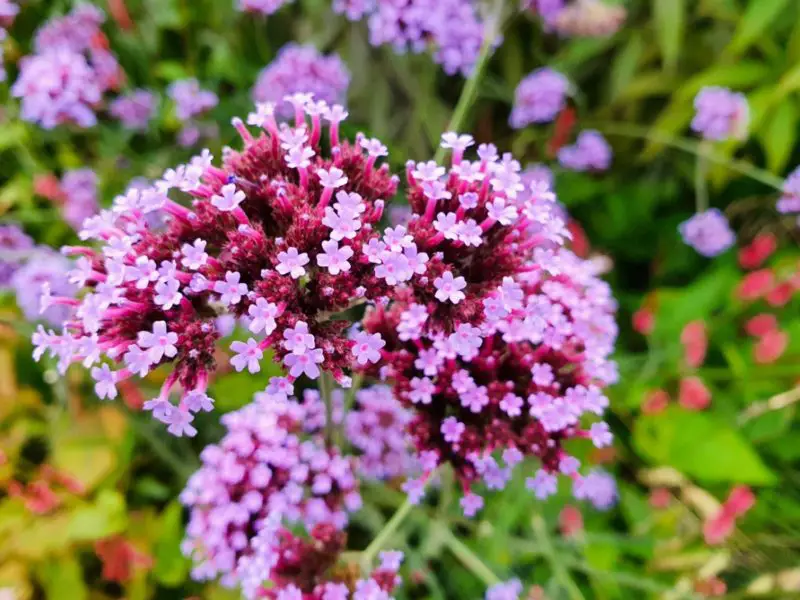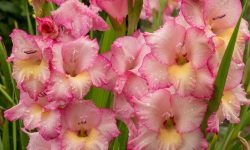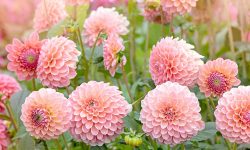Verbena is a favorite choice for summer gardens, valued for its striking colors, charming clusters of tiny flowers, and impressive tolerance to heat and full sun. Whether grown in garden beds, containers, or hanging baskets, verbena adds a lively burst of color from late spring to the first frost. However, to keep verbena looking its best and flowering continuously, proper deadheading is essential.
Deadheading verbena is a simple yet highly effective gardening technique that promotes longer blooming periods, healthier growth, and improved plant vigor. When spent flowers are left on the plant, it begins to divert energy into seed production rather than creating new buds. By removing faded blooms, you redirect this energy toward producing fresh flowers, ensuring your verbena stays full of color all season long.
This detailed guide will explain why deadheading verbena is important, when and how to do it correctly, and how additional care techniques can maximize flowering potential for the entire growing season.
Why Deadheading Verbena Is Important

Verbena naturally has a long blooming period, but its flowering performance can decline if old blooms are not removed. As flowers fade, the plant’s natural instinct is to produce seeds. This seed-setting process takes away valuable nutrients and energy that could otherwise be used for new flower production. Deadheading stops this energy drain and stimulates continuous bud formation.
Another benefit of deadheading verbena is aesthetic improvement. Faded or browning flowers can make the plant look unkempt and detract from the overall beauty of your garden. Regularly removing spent blooms keeps your verbena looking fresh, lush, and vibrant, maintaining its ornamental appeal.
Deadheading also improves air circulation around the plant. When old flower clusters are removed, light and air can reach the interior foliage more easily, reducing the risk of fungal diseases that thrive in damp, shaded conditions. In addition to promoting better health, this improved airflow helps keep the foliage greener and more robust.
When to Deadhead Verbena for the Best Results
Timing plays a critical role in keeping verbena flowering continuously. Deadheading should begin as soon as the first flower clusters start to fade. Unlike some plants that only need occasional deadheading, verbena responds best to frequent attention throughout the growing season.
For maximum blooms, inspect your verbena every few days during peak summer flowering. Once flower clusters lose their bright color and begin to dry, they should be removed immediately. Early deadheading encourages the plant to quickly push out new buds, preventing long gaps between flowering cycles.
In cooler climates, verbena may have slightly longer blooming intervals, but in hot regions, consistent deadheading is crucial because the plant can stop producing flowers entirely if allowed to go to seed. By maintaining a regular deadheading schedule, you can extend the blooming period well into fall.
How to Deadhead Verbena Correctly
Deadheading verbena is straightforward, but proper technique ensures you do not accidentally damage new growth or developing buds. Start by identifying faded flower clusters. Healthy flowers have bright, vibrant petals, while spent ones appear dry, brown, or shriveled.
Use clean, sharp pruning shears or scissors to snip the flower stem just above the nearest set of healthy leaves or leaf node. This encourages new branching from that node, leading to fuller growth and more flowers. For smaller or trailing varieties, you can also pinch off faded blooms by hand, but be careful not to pull too hard, as this can damage delicate stems.
If your verbena has become leggy or sparse, more aggressive pruning can be combined with deadheading. Cutting back up to one-third of the plant encourages fresh, bushier growth and a new flush of flowers. However, this type of trimming should only be done once or twice during the growing season to avoid stressing the plant.
Always discard removed blooms rather than leaving them on the soil surface, as decaying plant material can attract pests or harbor fungal spores. Keeping the surrounding area clean contributes to healthier verbena plants and continuous flowering.
Encouraging Continuous Flowering After Deadheading
Deadheading alone greatly improves verbena’s blooming performance, but additional care can further enhance flower production. Fertilizing after deadheading gives the plant the nutrients it needs to produce more buds. A balanced, slow-release fertilizer or a bloom booster high in phosphorus encourages abundant flowering while maintaining healthy foliage.
Regular watering is equally important, especially in hot summer weather. Verbena prefers evenly moist soil but does not tolerate waterlogged conditions. Deep, infrequent watering encourages stronger root systems, while consistent light watering in containers helps keep soil from drying out too quickly.
Cutting back leggy stems every few weeks also stimulates new growth. Verbena flowers best on fresh growth, so light trimming after each major flush of blooms helps maintain a compact, vigorous plant covered in blossoms. When combined with consistent deadheading, this practice keeps verbena flowering without significant gaps throughout the season.
Mulching around garden-grown verbena can help regulate soil temperature and retain moisture, reducing stress on the plant during heat waves. However, avoid covering the crown of the plant, as excessive moisture around the base can lead to rot.
Common Mistakes to Avoid When Deadheading Verbena
One of the most common mistakes gardeners make is cutting too far down the stem when deadheading. Removing too much foliage can limit photosynthesis and slow regrowth. Always cut just above a healthy leaf node to encourage quick branching.
Another mistake is waiting too long to deadhead. Verbena quickly shifts energy to seed production once flowers fade, so delayed deadheading may result in fewer new blooms. Checking plants regularly ensures you remove spent flowers before seeds form.
Some gardeners also overfertilize verbena after deadheading, believing it will produce more flowers. Excess nitrogen, however, leads to lush foliage but fewer blooms. A fertilizer with balanced nutrients or higher phosphorus content is better for promoting continuous flowering.
Neglecting to clean pruning tools can introduce disease to the plant. Always sanitize your shears before and after use, especially if you are working on multiple plants in the same session.
How Deadheading Improves Verbena’s Growth and Longevity
Consistent deadheading significantly improves verbena’s growth pattern. By stimulating new branching, deadheading creates a fuller plant with more flower-bearing stems. This not only increases the number of blooms but also makes the plant look more lush and attractive.
Healthy, regularly deadheaded verbena plants also have a longer blooming season. In ideal conditions, they can continue flowering from late spring through early fall, providing continuous color in the garden or containers.
Additionally, deadheading helps prevent self-seeding, which is important if you want to maintain specific hybrid varieties. Many hybrid verbenas do not come true from seed, so encouraging the plant to focus on vegetative growth rather than seed production ensures better consistency in flower color and form.
Caring for Verbena in Containers After Deadheading
Verbena grown in containers often needs more frequent deadheading and maintenance than garden-grown plants. Because containers dry out faster, they require regular watering to prevent stress, which can reduce flowering. After deadheading, applying a liquid fertilizer every two to three weeks helps replenish nutrients lost through frequent watering.
Container-grown verbena may also benefit from periodic rejuvenation pruning. Cutting back leggy stems by one-third after a major bloom cycle keeps the plant compact and stimulates new flowers. Hanging basket verbenas, in particular, can quickly become straggly if not regularly trimmed and deadheaded.
FAQs About How to Deadhead Verbena
When should I start deadheading verbena?
Deadheading should start as soon as the first flower clusters fade. Early and consistent removal of spent blooms encourages the plant to produce new buds continuously. Waiting too long allows seed production to begin, which can slow down new flowering cycles.
How often should I deadhead verbena?
During peak flowering season, check your verbena every few days and remove any faded blooms. Frequent deadheading keeps the plant looking fresh and maximizes flower production throughout the growing season.
Can I deadhead verbena by hand?
Yes, you can pinch off faded blooms by hand, especially on smaller trailing varieties. However, for cleaner cuts and to avoid damaging new growth, pruning shears or scissors are recommended for larger plants.
Should I cut back verbena after deadheading?
Light trimming after deadheading can help keep the plant compact and stimulate new blooms. For leggy or overgrown plants, cutting back by up to one-third of the growth can trigger a fresh flush of flowers.
What type of fertilizer should I use after deadheading?
Use a balanced or bloom-boosting fertilizer with a higher phosphorus content to encourage flower production. Avoid high-nitrogen fertilizers, which can promote leaf growth at the expense of blooms.
Can deadheading extend verbena’s blooming season?
Yes, consistent deadheading is the key to extending verbena’s blooming season. By preventing seed production, the plant continues to focus on producing new flowers rather than maturing seeds.
Do all verbena varieties benefit from deadheading?
Yes, all types of verbena, including trailing, upright, and hybrid varieties, benefit from deadheading. However, some newer hybrid cultivars are bred for self-cleaning, which means they naturally shed spent flowers. Even so, occasional deadheading can still improve their overall appearance and performance.
What happens if I don’t deadhead my verbena?
If you skip deadheading, verbena will shift its energy toward seed production, leading to fewer new blooms. Over time, the plant may stop flowering altogether until it is trimmed or rejuvenated.
Final Thoughts
Learning how to deadhead verbena properly is one of the simplest and most effective ways to keep it flowering all season long. By removing spent blooms regularly, providing balanced nutrients, and trimming leggy stems when needed, you encourage fresh growth and vibrant clusters of flowers from spring to fall.
With consistent care, verbena will reward you with a stunning, colorful display that enhances garden beds, containers, and hanging baskets throughout the warm months. Proper deadheading is the key to unlocking its full blooming potential, ensuring your summer garden remains lively and beautiful week after week.






